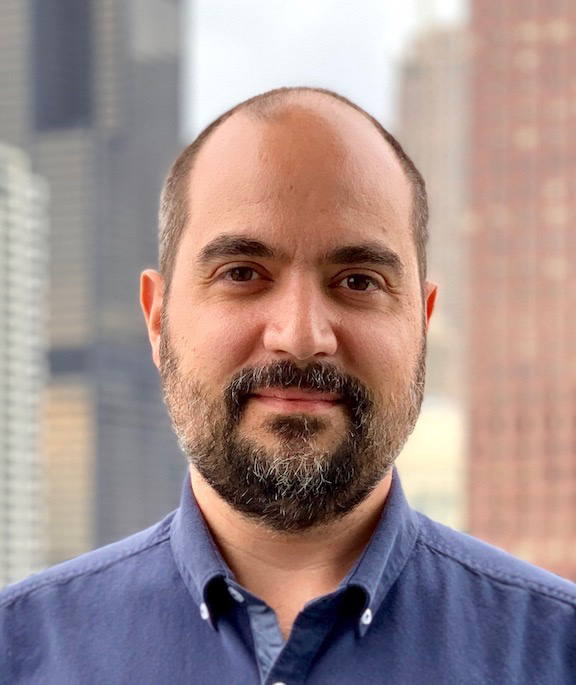Data journalism and the public conversation
Chicago Tribune recruits assistant professor Alex Richards to make sense of data in investigative story on Cook County state attorney

In his classes, assistant professor of magazine, news and digital journalism Alex Richards teaches his students about what can go wrong in data journalism. “As a reporter, you have to treat data like any other source. It has the power to mislead, even when it’s inadvertent or unintentional, just as much as it has the power to inform.”
It is this careful perspective that Richards, a 2011 Pulitzer Prize finalist, brings to his work with data. His most recent work in this area came when reporters at the Chicago Tribune asked him to assist with a story they were writing about Cook County state attorney Kim Foxx’s prosecution rates.
Tribune reporters Todd Lighty and David Jackson reached out to Richards for help last spring. Lighty, who earned a master’s degree in political science from the Maxwell School and taught investigative journalism for the Newhouse School, remembered Richards from their time working together at the Chicago Tribune.
Lighty says he and Jackson had asked political scientists for help with the data on Foxx’s record, but were unable to translate it into any usable material. Richards was able to reshape the data in a way that allowed the team to organize it defendant by defendant instead of charge by charge, says Lighty.
“The data released by Foxx’s office is at the criminal charge level, meaning that each row or record in the database represents a single charge or offense. Those are connected to individual defendants, and each criminal case can have more than one defendant,” says Richards. “This allowed us to answer some pretty sweeping questions about outcomes for different kinds of felony defendants between Ms. Foxx and her predecessor.”
When Richards first got involved in the investigation, he thought it would be quick work. But as he delved into the data, it became clear the investigation was bigger than he’d anticipated. “We found that [Foxx] was dropping all charges against felony defendants at a much higher rate than her predecessor in that office.”
In his research, Richards says he wanted to answer the questions, “What do those policy shifts and campaign promises look like when they play out in the real world?” and “What kind of impact has it had on justice and safety in Chicago?”
“The data alone can’t answer [all of these questions], but it can certainly add to the larger public conversation,” he says.
The team studied hundreds of thousands of felony defendant data spanning almost 10 years. “We focused on the final outcome of the cases, looking specifically at instances where all charges were dropped,” says Richards.
In the end, they found a “stark prosecutorial divide” between Foxx and her predecessor.
The story was timely. The day it ran, there was widespread looting in Chicago, and during a press conference, according to Richards, Chicago mayor Lori Lightfoot and police chief David Brown laid the blame at Foxx’s door.
Brown and Lightfoot had both noticed the increase in dropped felony charges under Foxx. After the looting, the mayor and police chief implied Foxx wouldn’t effectively prosecute perpetrators.
“I call upon our state’s attorney and our courts to make sure that these individuals who are arrested and those to come are held accountable… These people need to be held accountable and not cycled through the system,” Mayor Lightfoot told the Chicago Tribune.
“[Our story] added to that debate,” says Lighty.
Data, says Richards, is a way to “bulletproof” journalists’ findings “in a fair and accurate manner.” He encourages Newhouse students to take a class in data journalism.
“Once students learn a little bit about how it’s used in stories and some of the basic techniques, they can immediately employ [data]. It really opens their eyes to how many stories are just sitting there in plain sight, waiting to be told,” he says.
Adrianne Morales is a senior in the broadcast and digital journalism program at the Newhouse School.
This article has been corrected; Lighty and Richards knew each other from working together at the Chicago Tribune, not the Syracuse Post-Standard as we originally reported.